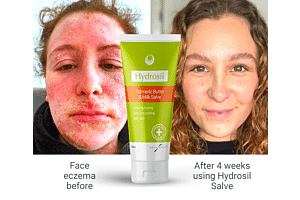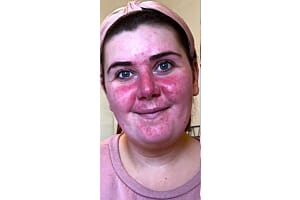What is Eczema? 6 July, 2007
Eczema, or dermatitis as it is sometimes called, is a group of skin conditions which can affect all age groups.In the UK, up to one fifth of all children of school age have eczema, along with about one in twelve of the adult population. The severity of the disease can vary. In mild forms the skin is dry, hot and itchy, whilst in more severe forms the skin can become broken, raw and bleeding. Although it can sometimes look unpleasant, eczema is not contagious. With treatment the inflammation of eczema can be reduced, though the skin will always be sensitive to flare-ups and need extra care. What different types of eczema are there?There are several different types of eczema, many of which look similar but have very different causes and treatments. The first step in effective treatment of eczema is a correct diagnosis. It is very important to see a general practitioner in the first instance, who may make a referral to a specialist dermatologist for further diagnosis and treatment.Atopic eczema – is the commonest form of eczema and is closely linked with asthma and hayfever. It can affect both children and adults, usually running in families. One of the most common symptoms of atopic eczema is its itchiness (or pruritis), which can be almost unbearable. Other symptoms include overall dryness of the skin, redness and inflammation. Constant scratching can also cause the skin to split, leaving it prone to infection. In infected eczema the skin may crack and weep (‘wet’ eczema). Treatments include emollients to maintain skin hydration and steroids to reduce inflammation. Allergic contact dermatitis – Develops when the body’s immune system reacts against a substance in contact with the skin. The allergic reaction often develops over a period of time through repeated contact with the substance. For example, an allergic reaction may occur to nickel, which is often found in earrings, belt buckles and jeans buttons. Reactions can also occur after contact with other substances such as perfumes and rubber. In order to prevent repeated reactions it is best to prevent contact with anything that you know causes a rash.Irritant contact dermatitis – This is a type of eczema caused by frequent contact with everyday substances, such as detergents and chemicals, which are irritating to the skin. It most commonly occurs on the hands of adults and can be prevented by avoiding the irritants and keeping the skin moisturised.Infantile seborrhoeic eczema – A common condition affecting babies under one year old, the exact cause of which is unknown. Also referred to as cradle cap, it usually starts on the scalp or the nappy area and quickly spreads. Although this type of eczema looks unpleasant, it is not sore or itchy and does not cause the baby to feel uncomfortable or unwell. Normally this type of eczema will clear in just a few months, though the use of moisturising creams and bath oils can help to speed this along.Adult seborrhoeic eczema – Characteristically affects adults between the ages of 20 and 40. It is usually seen on the scalp as mild dandruff, but can spread to the face, ears and chest. The skin becomes red, inflamed and starts to flake. The condition is believed to be caused by a yeast growth. If the condition becomes infected, treatment with an anti-fungal cream may be necessary. Varicose eczema – Varicose eczema affects the lower legs of those in their middle to late years, being caused by poor circulation. Commonly the skin around the ankles is affected, becoming speckled, itchy and inflamed. Treatment is with emollients and steroid creams. If left untreated, the skin can break down, resulting in an ulcer. What treatments are there for eczema? Emollients – Emollients are necessary to reduce water loss from the skin, preventing the dryness normally associated with eczema. By providing a seal or barrier, the skin is less dry, itchy and more comfortable. Testing a small amount on the skin first is advisable, as emollients contain substances to which some people are sensitive. Emollient product reviews for eczema. Topical steroids – When eczema is under control only emollients need to be used. However in flare-ups, when the skin becomes inflamed, a steroid cream may be needed. Steroids act by reducing inflammation and are used in most types of eczema. Topical steroids come in four different strengths, mild, moderately potent, potent and very potent. The strength of steroid cream that a doctor prescribes depends on the age of the patient, the severity of the condition and, the size of the area and part of the body to be treated. Topical steroids are applied thinly to the affected area, as directed by the prescribing doctor. Many people have concerns regarding the use of topical steroids and their side-effects. Reported side-effects have been largely due to the use of very potent steroid preparations over long periods of time.







